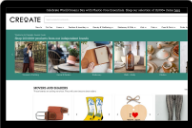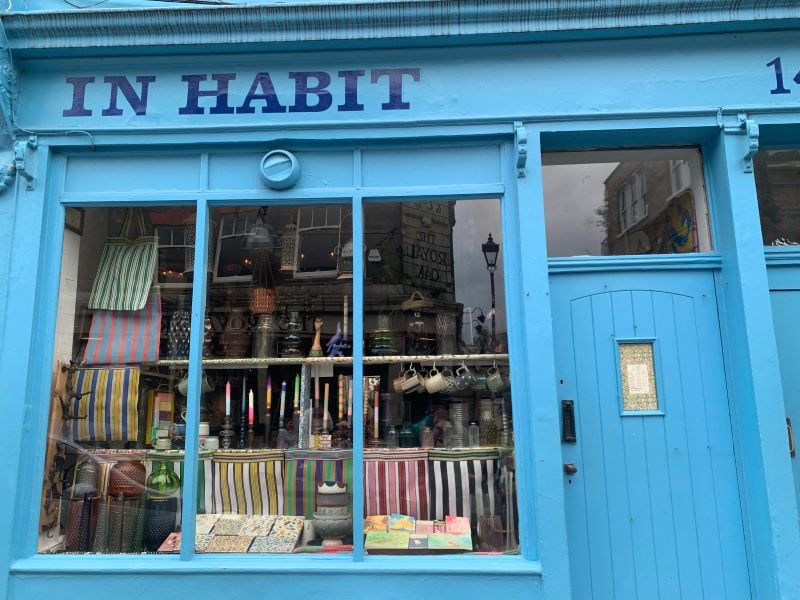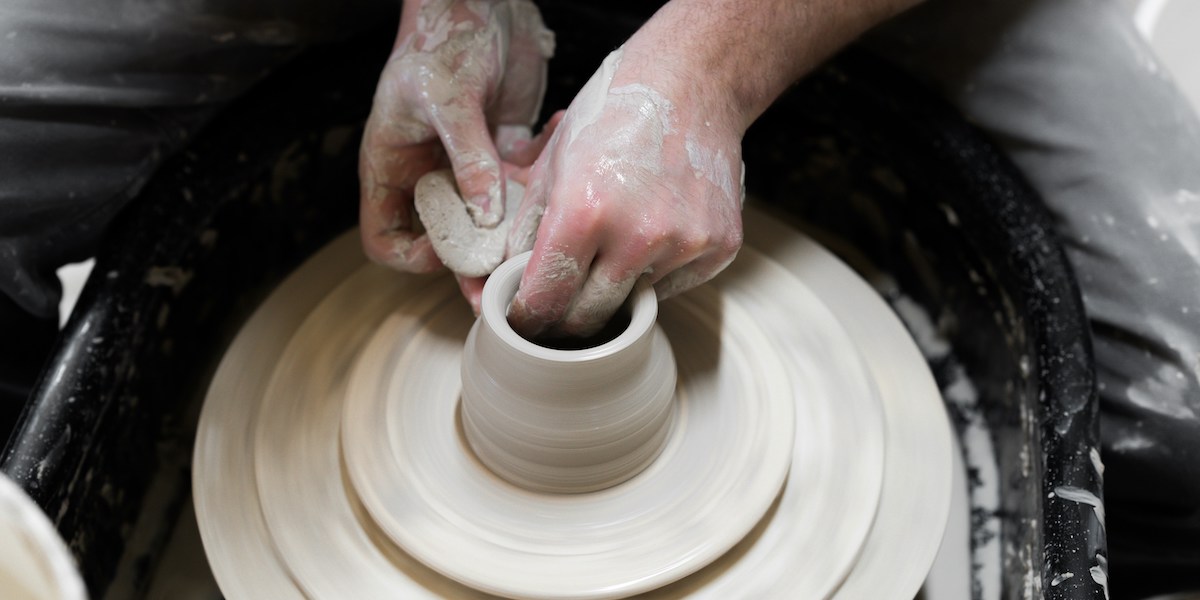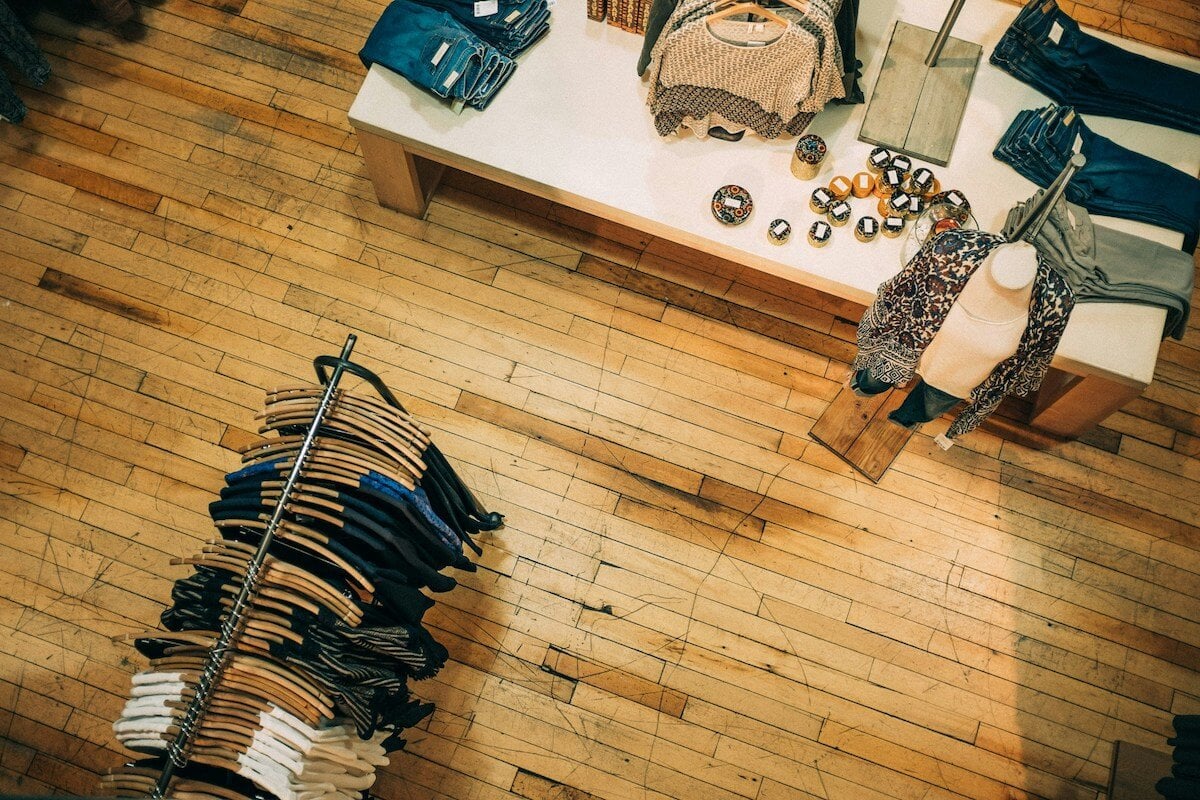
Incorporating retail elements into a space whose primary function is to provide services — coffee shops, salons, studios, spas etc. — isn’t a new idea. However, if your skills are cutting hair, giving a good massage, or making a coffee that really hits the spot, it maybe that the world of retail or ecommerce isn’t where you’re most in your element.
But we want to make a case for combining your services with a relevant product offering. Not sure where to begin? Read on as we get into how to find the best products to sell, how to display them, and ways to inspire your customers to try them without being pushy.
What are the benefits of combining services and retail?
Incorporating a product offering into an existing business model is about more than just branching out and diversifying income streams, though of course this also helps. Broadly speaking it’s about improving your customers’ experience. With remote work on the rise since the pandemic, many people find themselves working from cafes, giving many small businesses a much-needed boost and promoting them from coffee shops to community hubs.
Selling products in your studio, cafe or spa is also, as we mentioned before, a great way to promote business growth. And it’s a low-risk option, at that. By expanding your offering, you invite your customers to engage with you brand holistically, for both products and services. And if you’ve already forged trusting relationship with repeat customers for the services you offer, it shouldn’t be hard to sell them on a reasonable and related product offering, too. You’re combining experiences and memories with merchandise, giving the products you sell even greater impact than those sat on standard store shelves.
Take a spa for example. Customers may be coming here to relieve themselves of pain, a pampering experience or special occasion. Either way, the outcome is positive, and they enjoy their treatment. While riding the high of pain relief or a good pampering session, you offer them the option to indulge in a massage oil or cream just like the one you used in their treatment. In doing so, you extend a sensory link to the positive experience they’ve just had, and a reminder of how could it was to keep them wanting more.
Do not underestimate the power of our senses when it comes to how we experience and navigate the world. Whether through the smell of a massage oil, the vibrant hues of bottled hair products on the shelves of a hair salon, or the taste of coffee-infused chocolate or home brew coffee beans for sale in a cafe — tap into the senses, and you’re onto something! Recent research has even found that just over 8 in 10 consumers globally would recommend a store if they found the sight, sound and scent sensorial elements to be enjoyable.
What to sell

This is the fun bit! When choosing your products, keep your customers in mind. Remember this is an extension of your existing brand, so curate your products thoughtfully to match aesthetics and preferences of your ideal and existing customers. Let’s get into some ideas below:
- Crystals & spiritual supplies: if you already own a wellness space, it’s possible your customers have an eye for holistic health and wellbeing. This may also include allowing themselves time to explore their spirituality and introspect. With this in mind, we might also suggest stocking up on elegant notebooks to encourage journaling and self-reflection, as well as aromatherapy candles to indulge their sense between sessions at the spa.
- Merchandise: This can look different depending on the business you’re running, but is a great way to spread brand awareness using white label and sublimation or customisable items. A popular go-to for many businesses is tote bags, but quality pens or magnets can also make cute additions to your product offering.
- Food & drinks: As with many of these, what you choose will look very different depending on your business. If you run a gym or wellness cafe, perhaps you’ll be reaching for healthy snacks, energy drinks or health tonics. Meanwhile, if you’re a coffee shop, you’ll definitely want in on some quality coffee beans, and perhaps some giftable chocolate bars, too.
- Drinkware: Similarly, you may want to encourage your customers’ coffee habit with some artisanal and handmade mugs, tea cups, tea pots and espresso cups. At a gym or studio, remind your customers to stay hydrated on the go with reusable cups and water bottles.
- Cosmetic essentials: Heading up a salon? Ensure your customers can access all your staple hair care essentials and stock your shelves with shampoo, conditioner, hair masks and styling products to recreate their fave looks. Meanwhile, no spa should be without an indulgent selection of lotions, body oils, and luxurious body scrubs.
These are just a few ideas, but you know your customers best so choose wisely. Going forwards, you’re going to need to manage your inventory to see what’s working well and what’s not.
📚 Bookmark for later: Inventory Turnover Ratio: How to Calculate & Improve Yours
Choosing the right suppliers for your business
When it comes to picking out your suppliers, you’ll want to prioritise vendors who are easy to work with, dependable and who prioritise quality. If you’re shopping on CREOATE, you’re in the perfect place to find suppliers who fulfill this criteria. When you’re choosing which stockists to purchase from, keep the following in mind.
- Do they value quality? As we mentioned before, quality is key. You want the quality of the products you stock to meet the standard your customers expect from your services. If it’s possible, purchase some samples to test product varieties from different suppliers, and be sure to ask them any and all questions you may have regarding the materials they’re made from, and more.
- Could this be a reliable partnership? If you’re planning on working with vendors long-term, you need to know that you can forge strong relationships with them. Are they responsive to your questions? Are they honest and transparent about shipping and product lead times? Communication here is so important, and the better the working relationship you can develop with your suppliers, the more likely it is that you’ll be privy to exclusive products and even better deals.
- Do their products align with your brand? As we mentioned before, you want the products you sell to really reflect your brand personality, values, and aesthetic. Do their products speak to what your current and ideal customers would buy into? If they don’t, then they’re simply not it.
Displaying your merchandise
Create a stunning display of your products in dedicated sections, by your till and using creative shelving or even hanging solutions depending on the items you have to offer.
What is visual merchandising?

In simple terms, visual merchandising is the act of creatively displaying and organising products within a retail space. For a more in-depth guide, be sure to check out our blog that covers all the basics here.
When it comes to arranging your shop window, visual merchandising pro, Sarah Manning, offers the following advice: “Your window display should be more about creating a strong impact rather than showing everything in the window at the same time. Showing the customer less makes it easier for them to make a choice, whereas when you put everything in they can't make a choice because it's too cluttered.”
Of the biggest merchandising mistakes retailers regularly make, Sarah says, “I would say typically they tend to have too much out, so the quantity is probably wrong”, says Sarah. “If it's so heavy with product quantity, firstly it undervalues the product, and secondly, it makes it unshoppable. But if it’s too empty it can look like it’s been overshopped, so it’s all about the correct quantities and making sure it’s shoppable.”

Visual merchandising is extra important when you’re varying up your offering, as you don’t want things to get lost in a sea of products, as Sarah says. A great example of a business mixing it up in the retail space and nailing their merchandising is The London Review Bookshop. They display their fantastic literary picks alongside sweet treats and satisfying cuppas. They also hold discussions with local authors, and film screenings. For more inspiration from businesses going beyond retail, check out our round-up here. They’re not the only bookshop doing interesting things, and we’re absolutely loving the creativity coming out of independent businesses.
📚 Bookmark for later: 20 Visual Merchandising Tips & Best Practices for 2024
Selling your products & services like a pro

While many of your customers will be content to shop their skincare, haircare, or other staples online or as part of their grocery shop, with a bit of convincing, you’re sure to be able to reach those willing to try something new.
First of all, make sure you’re putting your best foot forward with excellent product displays using our resources above. Try and keep your products in a quieter area of you salon, studio, or spa. The last thing you want is for your customers to feel rushed or stressed following a positive treatment or experience. As mentioned above, any smaller items you can keep by your till and upsell are always great.
Also, try not to get swamped by your stock. Evaluate the storage space you have in a back room or private space to avoid cluttering or crowding your product offering.
Next, make sure your staff and colleagues are all educated on the products on display, their benefits, price etc. This way, should your customers have any questions on which product is right for them, they’ll always be in safe hands. If there are any products you can demonstrate, like cosmetics, skincare, or hair care if you own a salon, get stuck in and show your customers how they work while explaining how to use them. Then them feel the texture, taste, or smell where applicable. Remember, that sensory link could be what closes a sale for you!
Where appropriate, consider offering samples so customers can really get a feel for the effectiveness of your products if they’re not yet ready to commit to a larger purchase or product size. Incentivise their purchase with first-time discounts, and you may just cinch a loyal customer willing to support you for more in the future.
Don’t be disheartened if you don’t get every sale, be gracious if some customers aren’t interested. Ultimately, some customers might only be interested in your services, and that’s okay. There are plenty of others who will want in on your product offering, and lots of ways to get them to engage with them, too.
Go beyond retail
Expanding on your customer experience is an exciting way to grow your business and your brand. By thoughtfully curating your product offering, and displaying them with care and creativity within an inviting space, you can offer your customers a great service, and a great experience that keeps them wanting more.








